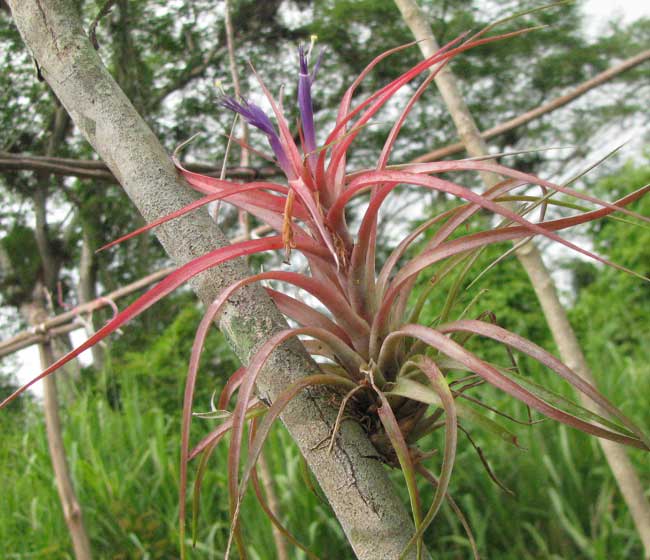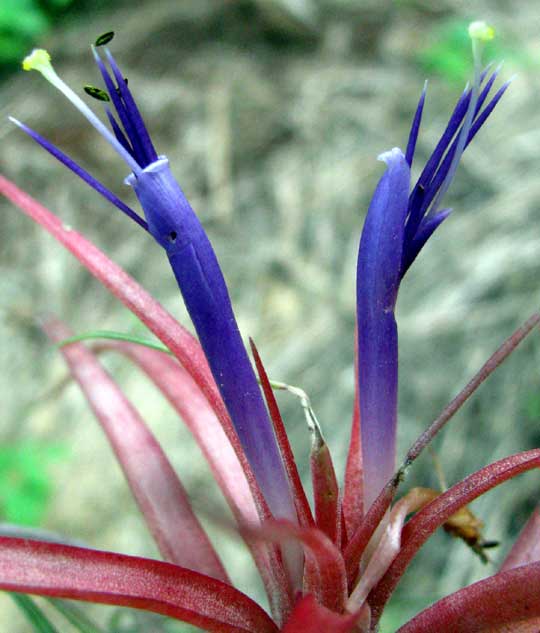Excerpts from Jim Conrad's
Naturalist Newsletter

from the July 11,, 2010 Newsletter issued from Hacienda Chichen Resort beside Chichén Itzá Ruins, central Yucatán, MÉXICO; limestone bedrock, elevation ~39m (~128ft), ~N20.676°, ~W88.569°
A SMALL, COLORFUL BROMELIAD FLOWERING
Bromeliads are mostly-epiphytic (growing on trees), non-parasitic, usually tufted members of the Bromeliad Family, the Bromeliaceae. In the US Southeast, Spanish Moss is a bromeliad, unusual in that its small plants link together in picturesque, dangling chains. Pineapple plants are unusual bromeliads in that they grow on the ground. In the American tropics, in general, the more humid the air, the more bromeliads you find on trees. In the Yucatán, the farther southeast you go the rainier it gets, the lusher the vegetation, and the more bromeliads there are. Here in the central Yucatán we have a fair amount of them -- more than around more arid Mérida, but less than farther southeast in Belize.
We've already looked at our three most eye-catching bromeliad species -- the big, red-bracted Aechmea (www.backyardnature.net/yucatan/aechmea.htm), the abundant, medium-size "Cardinal Airplant" (www.backyardnature.net/yucatan/tilland1.htm) and the ground-growing Piñuela with its sweet fruits (www.backyardnature.net/chiapas/pinuela.htm). The other day I was macheteing stakes to tie the tomatoes to in the garden when one of the dead, dried- out poles I'd cut turned out to have a fourth species on it. Its reddish leaves and bluish flowers are shown above.
A close-up of two flowers with bluish, tubular corollas, blue-filamented stamens, yellow stigma and pale style turning bluish below is shown below:

That's TILLANDSIA BRACHYCAULOS and there's not much information about it on the Internet. Probably I'm doing a future graduate student a service just by showing that we have the species here beside the ruins of Chichén Itzá.